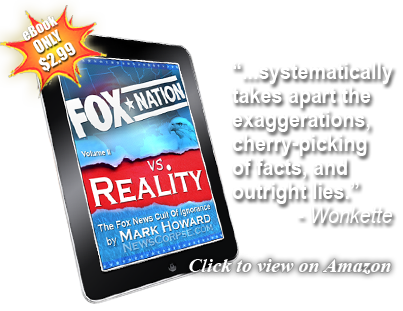Leo J. Shapiro and Associates has conducted a study that highlights some interesting distinctions between consumers of various news products and their political affiliations.
Here’s the breakdown by percentage of Dems vs. Repubs for each type of media:
Red Media:
Preferred by those inclined to vote Republican.
| Repub | Demo | |
| TV News: | 87% | 83% |
| News Radio: | 62% | 51% |
Blue Media:
Preferred by those inclined to vote Democratic.
| Demo | Repub | |
| Local Newspaper: | 78% | 70% |
| National Newspaper: | 24% | 15% |
| News Magazine: | 21% | 16% |
| Internet News: | 43% | 38% |
The most obvious difference is that Democrats tend to read more than Republicans. The problem is that Blue Media, with the exception of the Internet, has been in decline for some time. Print journalism is struggling with lower circulation and consolidation which results in less competition. In terms of political ad revenue, Red Media receives about 22 dollars for every one dollar spent by political ad buyers on Blue Media.
But, while Red Media is dominated by television, which commands the largest share of political ad revenue, Blue Media’s Internet is growing faster than any other venue. Spending for online political advertising increased 733% in 2004. Editor and Publisher, projecting that Internet growth is likely to continue, says that:
“…newspapers have built some of the nation’s best Web sites, giving them the opportunity at all levels of political races — as well as for issue-driven referendums — to offer powerful advertising and promotion mediums.
This is especially true in the realm of “package message” deals that allow political candidates and their supporters fresh and effective means of reaching established constituencies and new supporters through a combination of print and Web advertising and promotion vehicles.”
This report of the study’s findings doesn’t address online ads other than those on newspaper web sites. That leaves a lot of territory uncovered. Internet service providers like AOL and Earthlink, portals like Yahoo and Google, the web homes of broadcasters like CNN and MSNBC, and, of course, blogs, are sure to be a part of the burgeoning online political ad market.
It would be interesting to see if there was any correlation between the ascendancy of Red Media and the Republican sweep of Washington. And conversely, what effect did the decline of Blue Media have on the political misfortunes of Democrats?
There is a very real risk that lawmakers and regulators will take sides by promoting the media color that skews in their favor. Today that means Republicans advocating laws and regs crafted to further concentrate power in Red Media conglomerates – sort of a media-centered K Street Project. The Internet’s Blueness may not endure either, as the FCC moves forward with its assault on network neutrality, along with other efforts to constrain the net’s ordered anarchy.
The media is not a collateral victim in all of this. They are a full partner. And if we expect to restore anything resembling balance we have to be aggressively vigilant. The information in this study can be useful in deciding how best to reach Blue America.
What color is your Media?


One thought on “Red Media, Blue Media”
Comments are closed.